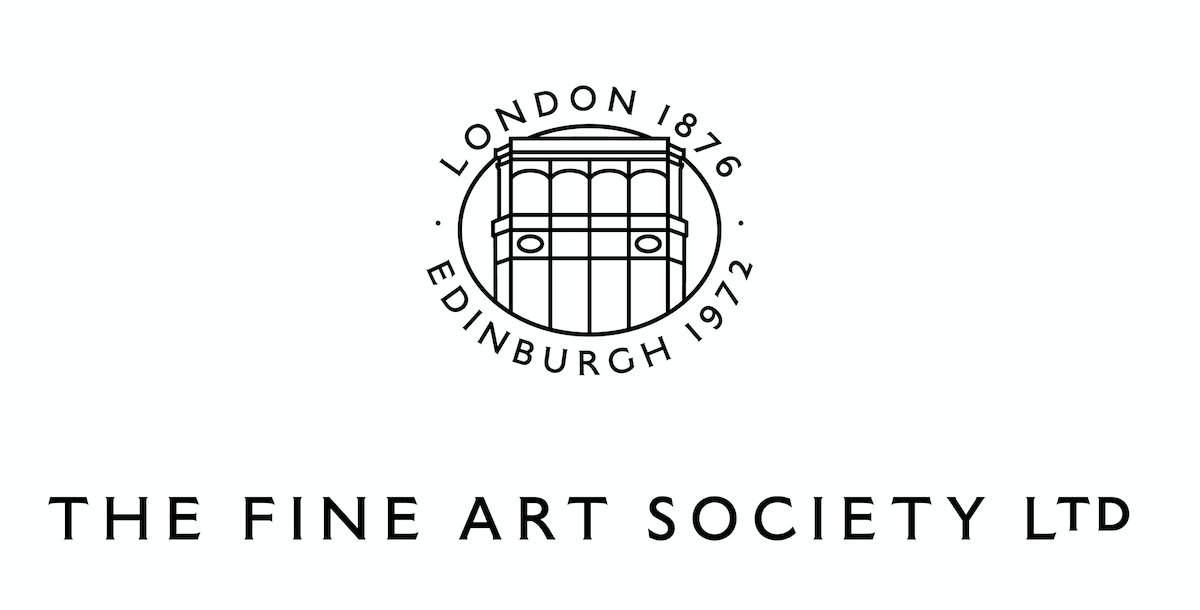-

Established in 1876, The Fine Art Society handles Scottish and British art, design, and decorative arts from the 18th century to the post-war period. Our Scottish base is an expansive gallery over two floors in the heart of Edinburgh's New Town. We also run a framing and conservation studio from the premises.We provide advice to collectors and public institutions on private sales, auction, framing and conservation. Our exhibition programme enriches, support and expands the market for historical fine art and design. As one of the oldest fine art dealers in the UK, we continue to handle many of the most influential artists of the nineteenth and twentieth centuries, with whom we have historic links.
We provide advice to collectors and public institutions, at all levels, on private sales, auction purchasing, framing, conservation and curating a collection.
-
E. W. Godwin's priliminary sketch for the facade of The Fine Art Society, c.1880
-

The Fine Art Society’s ground floor gallery transformed into 'The Gluck Room', 1932
The Fine Art Society was established by a group of like-minded and passionate collectors in 1876. The company was then, as now, at once traditional and progressive in outlook, enjoying a prominent position as a print seller, dealer, contemporary exhibition organiser, and publisher; producing many fine art books as well as extensive exhibition catalogues for over 140 years. Major living artists who exhibited at the gallery include Sir John Everett Millais, John Singer Sargent, Sir Edward Burne-Jones, Sir Frank Brangwyn, Alfred Gilbert and the New Sculpture artists, Gluck, Joseph Southall and Algernon Newton amongst many others.
The gallery has been influential in the promotion of contemporary artists since the 1870s, and can be virtually credited with the invention of the monographic exhibition. Famous examples include James McNeill Whistler’s An Arrangement in White and Yellow in 1883, and Alfred East's Pictures and Drawings of the Landscape of Japan in 1890. Both artists, particularly Alfred East, would cement the gallery’s key role with promoting Japanese influence in the West, culminating in the first large scale one-person show of the work of Hokusai anywhere in Europe.
By the turn of the twentieth century The Fine Art Society had firmly established its role in promoting and exhibiting many artists allied with the rising British Impressionist and Modern movements. Whistler was key to introducing impressionist artists such as William Stott of Oldham and Walter Sickert, who described the gallery as ‘the best shop in London’. Both artists were key to the development en plein air painting in Britain and laid the foundation for future exhibitions at the gallery with more maverick modernists on the international scene such as Leon Bakst and Tsuguharu Foujita, alongside a special brand of British realists including William Strang, Dame Laura Knight, Gluck and Ernest and Dod Procter.
-

Gerald Laing: A Retrospective held at The Fine Art Society, 2016
The late twentieth century saw the opening of our first space in Edinburgh, establishing our strong link with Scottish art and artists. Exemplified by our encyclopaedic reviews of Scottish art through the centuries from 1700 via Arthur Melville and The Scottish Colourists to the present day. The gallery maintains its central role in the revival of key Scottish artists including John Lavery and the Glasgow Boys, as well as the transformation of Charles Rennie Macintosh from an art historical curiosity, to one of the most valuable cultural properties in Scottish art and design.
The company’s early successes laid the way for major revival exhibitions in the latter part of the twentieth century. Works by Alfred Gilbert, Frederick Leighton and the New Sculpture artists featured in British Sculpture 1850-1914 in 1968, whilst the seminal 1978 exhibition Eastern Encounters - Orientalist Painters of the 19th Century featured orientalist artists such as Edward Lear and Carl Haag. Charles Ginner and Walter Sickert returned once again in the major academic exhibition Camden Town Recalled in 1976. As well as these we have staged major exhibitions celebrating designers and craftspeople who have contributed to the vitality in decorative art and design for over 150 years, in such shows as C. R. Ashbee and The Guild of Handicraft, Architect-Designers from Pugin to Mackintosh in 1981, and Austerity to Affluence, British Art and Design 1945-1962, in 1997.
Many of our most influential exhibitions have been the result of a multitude of fruitful partnerships that the company has built for almost a century and a half. From passionate collectors and academics and curators, as well as artists, designers and craftspeople, The Fine Art Society has built a unique and enduring position in the rich fabric of British art history, which we maintain today.
About
-

-

The Fine Art Society’s ground floor gallery transformed into 'The Gluck Room', 1932
-

Gerald Laing: A Retrospective held at The Fine Art Society, 2016




